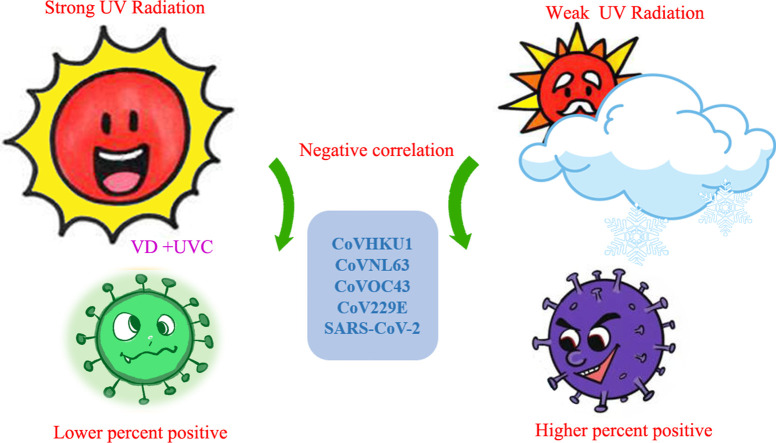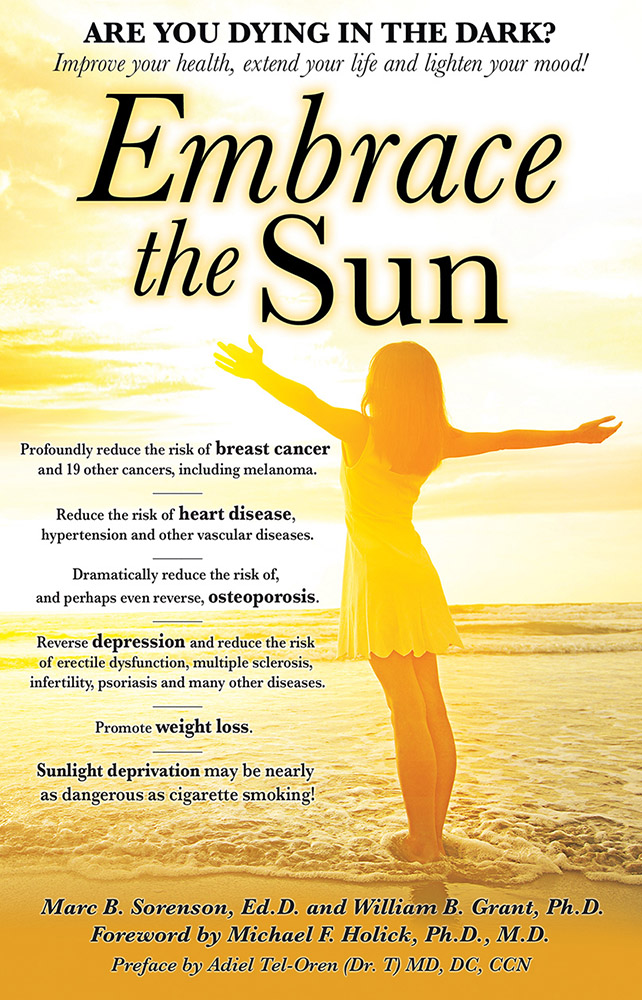More sunlight, less covid 19 by Marc Sorenson, EdD.
More sunlight, I said at the onset of Covid-19 (also known as SARS-Cov-2), would be associated with a reduced incidence disease and death. In addition, I stated the disease would make a remarkable resurgence in fall and winter, as availability of sunlight diminished. For that statement, some praised my perspicacity, and others derided my intelligence. I lost some friends on social media and had to unfriend others.
For our purposes, it is important to understand that there are several coronaviruses, and each causes its particular disease manifestation.
In addition, with the possible exception of Covid-19, these viruses are seasonal. Thus, the incidence rates are higher in winter and lower in summer. Could sunlight exposure be the key to the seasonal relationship? Especially relevant, of course, is that Covid-19 was non-existent at the time the other viruses proved their seasonality. It now appears, however, that Covid-19 is indeed seasonal. Thus, I believe that sunlight drives that seasonality.
So what do we to obtain more sunlight now that winter has arrived?
I suppose it is self-serving to say, “I told you so.” Yet indeed, I did make my prediction, and it was correct. It would have been even more correct if people were encouraged to seek the sun rather than suffer through sunless lockdowns. There is now scientific corroboration that more sunlight associates with less death and disease from Covid-19 and other coronaviruses. Recent research (already dated for 2021), substantiates my ideas on sunlight and Covid-19. In this study, the investigators assessed sunlight available from April 17-July 20, 2020 in various U.S. geographical zones. Then, they compared sunlight availability to the risk of Covid-19 and four other coronaviruses in different areas of the U.S. The graphical abstract they presented is below and makes the same point that I made months ago.
In areas of strong UV radiation (more sunlight), there was much less risk of testing positive for Covid-19 and the other coronaviruses.
Obviously, people need more sunlight to help protect themselves from Covid-19 and other viruses. Obtaining more sunlight works in at least two ways against Covid-19.
1. Research from the CDC shows that sunlight rapidly kills Covid-19 in aerosols.
Aerosols are suspensions of solid particles or liquid droplets in air. They are potential routes for disease transmission. Sunlight is also able to kill Covid-19 on surfaces.
2. More sunlight exposure causes the skin to produce more vitamin D
. Vitamin D inhibits the overproduction of cytokines, specialized protein molecules that attack and destroy infections. Usually, the cytokine needed to fight the infected tissue stops its attack after it has won the battle. However, in the case of a disease like influenza (or Covid-19), “friendly fire” occurs. The body’s immune system recruits innumerable “extra” or reinforcing cytokines, and those cytokines mount an overwhelming attack against the tissue they initially protected; in other words, they cause a cytokine storm.
Cytokine storms lead to severe inflammation that weakens or destroys blood vessel membranes in the lungs.
This causes fluid to seep through to the air sacs, which leads to pneumonia. A person then ends up drowning in his/her own body fluids. Dr. Angela Rasmussen describes it thus: “Basically you’re bleeding out of your blood vessels.” She goes on to say that the problem may not end there. The storm spills into the circulatory system and can create systemic issues across multiple organs.
Vitamin D, through various mechanisms, retards and stops cytokine storms.
Thus, sun exposure is a two-edged sword: (1) it kills Covid-19 outside the body. (2) It causes the production of vitamin D and can stop the cytokine storm.
So in winter, when there is little sunlight available, and virtually no production of vitamin D, what shall we do?
When there is insufficient sunlight, it is essential to find another source of light that will also produce vitamin D. Sunbeds are the ideal source of the light we seek. Research shows that sunbed users (tanning bed users) in Canada and the U.S. have higher vitamin D levels than any other demographic.
I own a sunbed and go to salons when traveling. This winter, I plan to use my sunbed regularly. In my opinion, it is the best protection against the sunlight deficiency experienced in winter.
For more information on the healthful benefits of sunlight, visit https://sunlightinstitute.org/ and read the book, Embrace the Sun.



